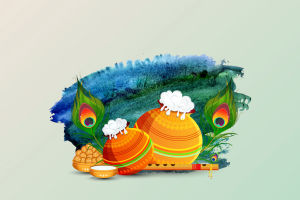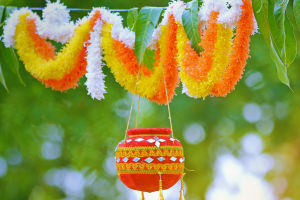Janmashtami, also known as Krishna Janmashtami or Gokulashtami, is one of the most celebrated Hindu festivals, marking the birth of Lord Krishna—the eighth incarnation of Lord Vishnu.
In 2025, this spiritually significant day will be observed on Friday, August 15, coinciding with India’s Independence Day. It’s a celebration that blends devotion, music, dance, and joyous rituals.
Why Janmashtami Is Celebrated
According to Hindu scriptures, Lord Krishna was born in Mathura over 5,000 years ago during the Dwapara Yuga to Devaki and Vasudeva. His birth occurred in a prison cell under the tyrannical rule of King Kansa, his evil uncle. Krishna’s arrival was destined to restore dharma (righteousness) and defeat adharma (evil). His life teachings, preserved in sacred texts like the Bhagavad Gita, continue to guide millions spiritually.
Date and Timings in 2025
In 2025, Janmashtami falls on **August 15**. The Ashtami tithi (eighth day of the waning moon) in the month of Bhadrapada begins at 11:55 AM on August 14 and ends at 2:39 PM on August 15. The Nishita Puja—the midnight celebration believed to be Krishna’s birth time—will take place on the night of August 14, making that night especially sacred.
How India Celebrates Janmashtami
Festivities vary across regions but are united by devotion and creativity.
• In Mathura and Vrindavan, Krishna’s birthplace and childhood home, devotees perform Ras Leelas (divine plays), sing bhajans, and join in magnificent temple celebrations.
• In Maharashtra, the Dahi Handi event recreates Krishna’s butter-stealing antics, with young men forming human pyramids to break pots of curd hanging high above the ground.
• In Gujarat, the city of Dwarka—where Krishna ruled—lights up with temple rituals and colorful processions.
• In South India, people draw beautiful kolams (rangolis), recite scriptures, and offer sweets made from butter, milk, and jaggery.
Traditional Rituals and Practices
Devotees observe a fast throughout the day, which is broken at midnight after Krishna’s birth is commemorated with chants, bells, and celebrations. Small idols of baby Krishna are placed in decorated cradles and rocked lovingly. Homes and temples glow with diyas, flowers, and lights.
Families read the Bhagavad Gita, sing devotional songs, and dress children as Krishna and Radha. Sweets like makhan mishri, panjiri, and kheer are offered as bhog and later distributed as prasad.
A Celebration of Hope and Harmony
Janmashtami is more than a festival—it’s a celebration of hope, divine love, and the triumph of good over evil. The teachings of Lord Krishna on karma, dharma, and devotion continue to inspire people across generations. As Janmashtami 2025 draws near, may the divine energy of Krishna fill every heart with peace, joy, and spiritual awakening.


